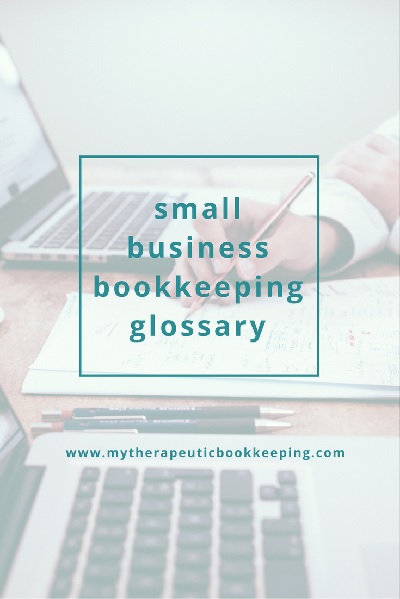Looking for a little calm for the chaos in your private practice? A little organization to the clutter? How about those dang receipts that just keep piling up… those little buggers!
How nice would it be to work towards a paperless office for your private practice? Well, fear not, I have some pretty solid tips and tricks up my accounting sleeve to help you clear that clutter!
So, without further adieu, here are my five steps to a paperless office for therapists:
Step 1: Receipts
Have I mentioned how much I occasionally resent receipts? Not only for my own business expenses, but my clients’ private practice receipts as well!
Luckily, I’ve found an awesome solution for receipt management!
It’s called Dext (previously Receipt Bank)… you can literally just snap a picture of your receipt using your smart phone, from the app, and then toss that pesky paper receipt out!
Online receipts? Not a problem – you’re given a special email for forwarding those into your account. Oh – it also integrates with several great accounting software’s so you can then match the receipt to the transaction in the accounting software.
With a streamlined system like this in place (and diligent receipt adding on your part), you have a solid audit trail and proof of your expenditures without the shoeboxes full of receipts!
Step 2: Time Tracking
Do you have employees or independent contractors working for your private practice who you pay hourly? Do you use a time tracking software or are they sending you emails or spreadsheets of their hours? If it’s the latter or you’re chasing down hours just to pay people – then it’s time to up your time tracking game and get more organized! There are a LOT of really great time tracking options out there that will help you streamline time tracking so you can have all your time tracking in one place – not a sticky note on your desk! One of my favorites is called QuickBooks Time (formerly TSheets).
What I really love about QuickBooks Time is how it integrates with my payroll processing software, Gusto. This means I just click a button in QuickBooks Time and it syncs everyone’s hours over to Gusto for me – which means I don’t even have to manually enter hours in my payroll software!
I also really love QuickBooks Time because I can generate some really great reports which I then use for KPI analysis (key performance indicators)!
And before you say ‘I have no reason to track time’ – let me stop you right there! A long time ago – wayyy before I had a team – I used time tracking software every day. For what reason you may ask?! I tracked my own time (as the business owner) for everything I did – from admin work to actual client work to article writing. Why? For my own KPI tracking plus knowing exactly how much time certain things took in my business. For example, once I knew how much time client onboarding takes, I was able to accurately budget for a hiring position for an onboarding specialist. Plus set expectations of how long it should take on average. Time tracking for me was also crucial in helping me create an accurate time budget as well – which then enabled me to create a schedule of when tasks would get done and how much time I should allot to each task.
Step 3: Contractor Payment/Payroll Management
So now you have the time tracking down, but what about actually paying your contractors or processing employee payroll?
I already mentioned it above, but Gusto is my absolute favorite payroll processing software! You can pay both contractors and employees using Gusto, the payments will direct deposit straight into your contractors and/or employees bank accounts, and Gusto will electronically file all the tax forms and payroll taxes on your behalf. Probably my favorite part of Gusto – the entire contractor and employee onboarding is electronic and paperless. Did you ever work for someone and when you first started they handed you a W-9 or W-4 form and said ‘Here, fill this out and sign it please.’ Yeah? Those forms are all handled electronically within Gusto when you add a new contractor or employee –Gusto sends them the correct form, they fill it out online and even electronically sign it online! Heck yes! And if you’re not familiar with what the heck all of that means.. simply put, payroll can require a LOT of time, effort, paper, and stress as a business owner – but when you use Gusto, they literally do everything for you, walk you through step by step what you need to do to pay contractors and/or employees, and keep you up to date on any tax changes.
If you don’t use an online payroll software like Gusto, you’d have to pay people using paper checks, provide people with paper tax forms to complete, file paper tax forms to the IRS, and sign paper documents rather than electronically sign!
Step 4: Pay Bills Online!
I know there are some folks who absolutely will not pay bills online – and if this is you and you’re not willing to bend for your private practice – then carry on to the final tip! If this is not you – this is most likely already something you’re doing or familiar with! Nowadays most bills (especially recurring ones), can be paid online, possibly even via recurring payments. Paying online is a wonderful tool to utilize. This saves you from having to write a check, then mail the check, then wait for them to deposit it, wondering when the heck will that money go out of your bank account!
If you’re not sure if something can be paid online, just ask! Chances are, the business or person you’re paying may have another option!
And here’s a pro tip for you – if you’re working with contractors – for example a marketer or billing person (not a clinician you hired as a contractor for your private practice) – I fully believe they should have their own payment system in place. Much like you most likely have in place for accepting payments from your clients. If you’ve hired another business owner – they should provide you with a bill that you can somehow pay online!
Step 5: Ditch the cash and check payments from clients and insurances!
There – I said it! You know who you are if you’re still accepting cash or checks from clients. And I know you know how much of a burden it is to go to the bank to deposit the cash or have to deposit those checks – whether at the bank or via mobile app. Then you get to wait for those funds to actually show up in your bank account.
There is a better way! Therapists need to be able to accept payments via a HIPAA compliant platform – and luckily there are lots of great options out there. If you use an EHR/EMR like SimplePractice, that has a billing feature called Stripe built into it. This allows you to accept online card payments right through the platform! It’s wonderful. If you still accept cash or checks, it may be time to put a new policy in place stating you only accept debit or credit card payments and the occasional check if absolutely necessary. And yes…. online payment platforms DO charge a processing fee and that gets taken from the total amount you bill the client. Don’t sweat it – the minimum fee charged is a drop in the hat in comparison to the paperless option, direct payments, and ease of payment for your clients (most of your clients don’t want to deal with checks either!). Plus, the fees are a biz tax deduction.
As for those insurance companies still sending you paper checks – reach out to the insurance company and ask if you can setup EFT deposits (electronic funds transfers). Chances are, this is something they can offer! No more waiting on those reimbursement checks to come in the mail or hoping they don’t get lost, stolen, or damaged in transit!
There you have it… a lot of really great ways to go paperless, streamline the biz side of your private practice, and keep cash flowing consistently!






